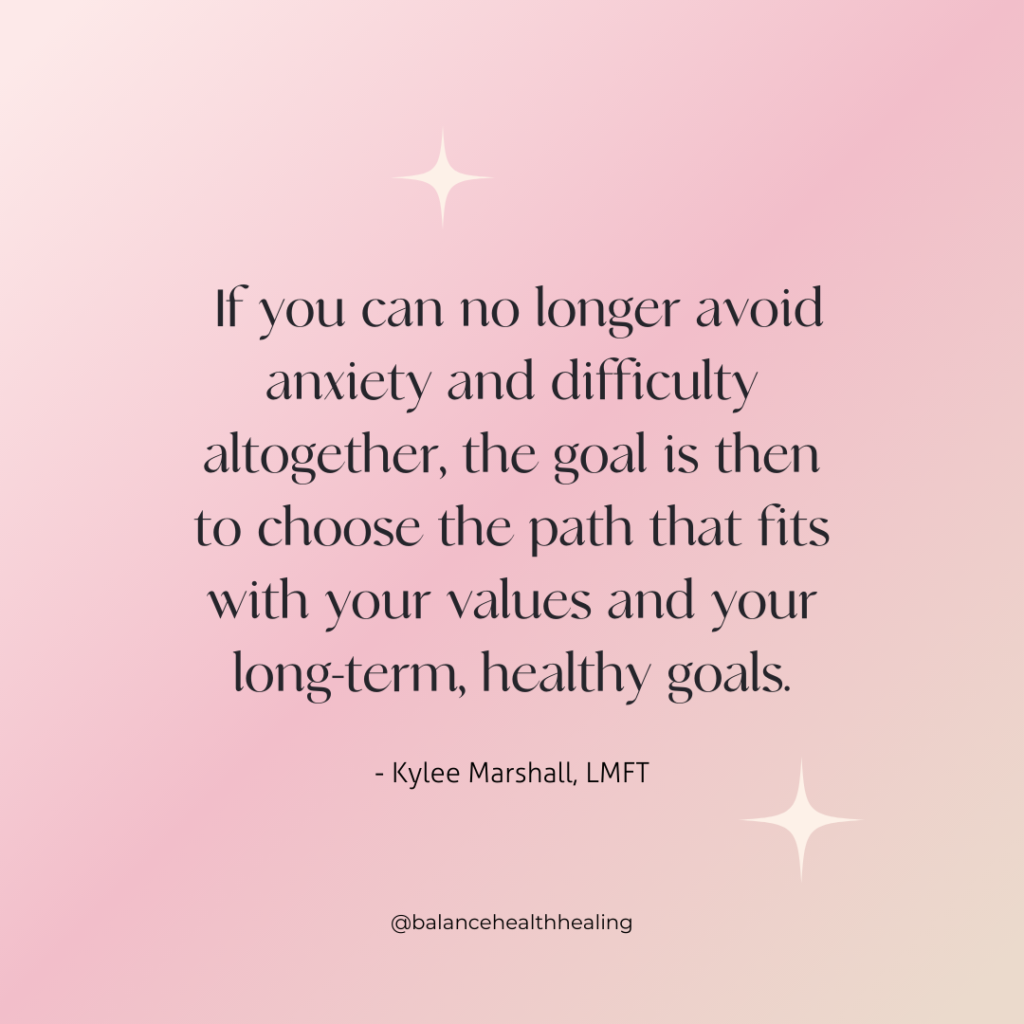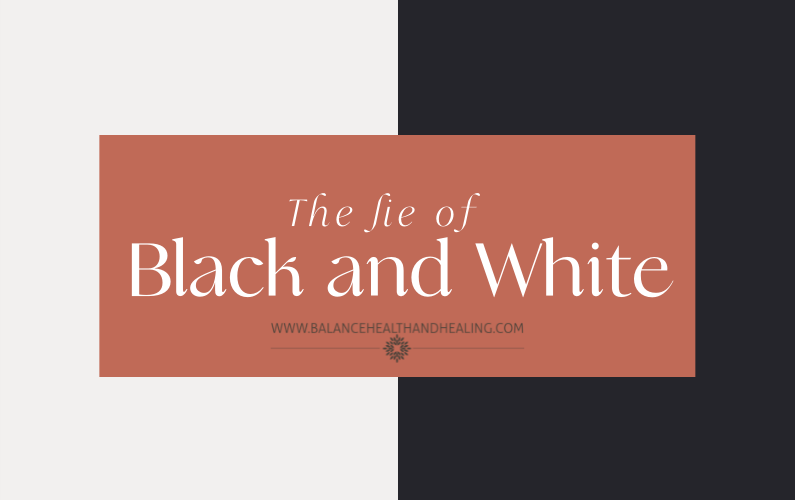One therapy modality I use most is called cognitive behavioral therapy (CBT). This therapeutic method shows the link between thoughts, feelings, and behaviors. One of the central tenets of CBT is that our brains all make “cognitive errors.” Basically, this means that we think things that are flawed and untrue. These common thinking errors can be grouped into several categories. For example, emotional reasoning errors, errors in which we jump to conclusions, and black and white thinking to name a few. When we think in black in white, we engage in “all or nothing” thinking. We think something is all good or all bad. We think that something is either all right or all wrong. This way of thinking leaves no room for middle ground or a helpful and realistic “gray” area. Much of our experiences exist in the middle rather than the extremes.
One major lie that I see black and white thinking tell is that there is a “right choice” that is easy and peaceful and that there is a “wrong choice” that is riddled with difficulty, problems, and anxiety. This black and white trap keeps us from making healthy and informed decisions. The truth is no matter your choice, you are going to face difficulty, stress, and hardship. On one hand, this can feel disheartening. On the other hand, it is extremely freeing to accept the fact that there is no problem-free choice. Our charge, then, is to choose the path and the anxiety and the problems that we’re willing to take on and that fits with our values and goals.
 I am a marriage and family therapist and I constantly think of how things apply to relationships, couples, and families. When learning about couples, we often talk about the idea that when we choose a partner, we choose with them a collection of problems that we are willing to deal with and accept throughout our lives. Many of the difficulties in our relationships won’t ever be resolved, you just deal with them because the good parts of your relationship are worth dealing with the difficulty. This is the concept of choosing your anxiety applied. You can’t actually find a perfect partner, but you can find a partner that you love with problems you’re willing to accept.
I am a marriage and family therapist and I constantly think of how things apply to relationships, couples, and families. When learning about couples, we often talk about the idea that when we choose a partner, we choose with them a collection of problems that we are willing to deal with and accept throughout our lives. Many of the difficulties in our relationships won’t ever be resolved, you just deal with them because the good parts of your relationship are worth dealing with the difficulty. This is the concept of choosing your anxiety applied. You can’t actually find a perfect partner, but you can find a partner that you love with problems you’re willing to accept.
Let me give an example of what this looks like in eating recovery. One of the most common things I hear clients say keeps them from recovering is anxiety. You might worry about what your life and your body will look like if you have a healthy relationship with food and leave the eating disorder behind. Without the perceived sense of control eating disorders give you, you may be nervous that those feelings will be replaced with anxiety—and the truth is, they might be! However, in this scenario, black and white thinking would probably say that recovery brings anxiety while staying the same doesn’t bring anxiety. This just isn’t the case. The fact of the matter is that continuing to live life with eating concerns also has its anxieties—the anxiety of being found out, decreased ability to regulate emotions, and distress around mealtimes. If you can no longer avoid anxiety and difficulty altogether, the goal is then to choose the path that—although problem-filled—fits with your values and your long-term, healthy goals. You can’t always choose whether or not to have anxiety or difficulty, but you can choose what difficulties and anxieties you’re willing to take on in pursuit of long-term health and happiness.
This is just one example of the way black and white thinking may keep you stuck and one solution for pushing those thoughts more towards the middle. What other black and white thinking traps do you notice yourself fall into in your recovery journey? What are ways you can expand your thinking to include a more realistic view of the world?

